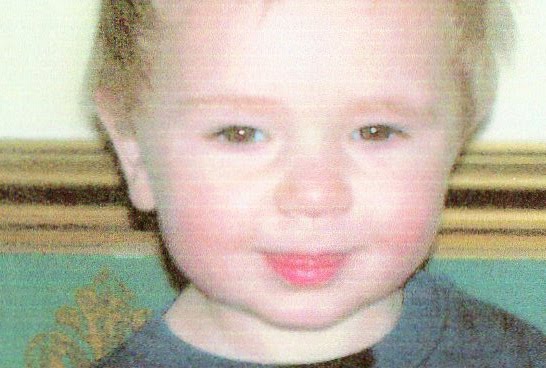ScienceDaily (Jan. 21, 2009) — The first people to arrive in America traveled as at least two separate groups to arrive in their new home at about the same time, according to new genetic evidence published online in Current Biology.
After the Last Glacial Maximum some 15,000 to 17,000 years ago, one group entered North America from Beringia following the ice-free Pacific coastline, while another traversed an open land corridor between two ice sheets to arrive directly into the region east of the Rocky Mountains. (Beringia is the landmass that connected northeast Siberia to Alaska during the last ice age.) Those first Americans later gave rise to almost all modern Native American groups of North, Central, and South America, with the important exceptions of the Na-Dene and the Eskimos-Aleuts of northern North America, the researchers said.
" Recent data based on archeological evidence and environmental records suggest that humans entered the Americas from Beringia as early as 15,000 years ago, and the dispersal occurred along the deglaciated Pacific coastline," said Antonio Torroni of Università di Pavia, Italy. "Our study now reveals a novel alternative scenario: Two almost concomitant paths of migration, both from Beringia about 15,000 to 17,000 years ago, led to the dispersal of Paleo-Indians—the first Americans."
Such a dual origin for Paleo-Indians has major implications for all disciplines involved in Native American studies, he said. For instance, it implies that there is no compelling reason to presume that a single language family was carried along with the first migrants.
When Columbus reached the Americas in 1492, Native American occupation stretched from the Bering Strait to Tierra del Fuego, Torroni explained. Those native populations encompassed extraordinary linguistic and cultural diversity, which has fueled extensive debate among experts over their interrelationships and origins.
Recently, molecular genetics, together with archaeology and linguistics, has begun to provide some insights. In the new study, Ugo Perego and Alessandro Achilli of Torroni's team analyzed mitochondrial DNA from two rare haplogroups, meaning mitochondrial types that share a common maternal ancestor. Mitochondria are cellular components with their own DNA that allow scientists to trace ancestry and migration because they are passed on directly from mother to child over generations.
Their results show that the haplogroup called D4h3 spread from Beringia into the Americas along the Pacific coastal route, rapidly reaching Tierra del Fuego. The other haplogroup, X2a, spread at about the same time through the ice-free corridor between the Laurentide and Cordilleran Ice Sheets and remained restricted to North America.
" A dual origin for the first Americans is a striking novelty from the genetic point of view and makes plausible a scenario positing that within a rather short period of time, there may have been several entries into the Americas from a dynamically changing Beringian source," the researchers concluded.
The evidence that separate groups of people with distinctive genetic roots entered the Americas independently at the same time strongly implies linguistic and cultural differences between them. "The origin of the first Americans is very controversial to archaeologists and even more so to linguists," said study corresponding author Professor Antonio Torroni, heading the University of Pavia group. "Our genetic study reveals a scenario in which more than one language family could have arrived in the Americas with the earliest Paleo-Indians."
The researchers include Ugo A. Perego, Universita` di Pavia, Pavia, Italy, Sorenson Molecular Genealogy Foundation, Salt Lake City, UT; Alessandro Achilli, Universita` di Pavia, Pavia, Italy, Universita` di Perugia, Perugia, Italy; Norman Angerhofer, Sorenson Molecular Genealogy Foundation, Salt Lake City, UT; Matteo Accetturo, Universita` di Pavia, Pavia, Italy; Maria Pala, Universita` di Pavia, Pavia, Italy; Anna Olivieri, Universita` di Pavia, Pavia, Italy; Baharak Hooshiar Kashani, Universita` di Pavia, Pavia, Italy; Kathleen H. Ritchie, Sorenson Molecular Genealogy Foundation, Salt Lake City, UT; Rosaria Scozzari, Universita` La Sapienza, Rome, Italy; Qing-Peng Kong, Chinese Academy of Sciences, Kunming, Yunnan, China, Yunnan University, Kunming, Yunnan, China; Natalie M. Myres, Sorenson Molecular Genealogy Foundation, Salt Lake City, UT; Antonio Salas, Unidade de Xenetica, Instituto de Medicina Legal, Universidad de Santiago de Compostela, Galicia, Spain; Ornella Semino, Universita` di Pavia, Pavia, Italy; Hans-Jurgen Bandelt, University of Hamburg, Hamburg, Germany; Scott R. Woodward, Sorenson Molecular Genealogy Foundation, Salt Lake City, UT; and Antonio Torroni, Universita` di Pavia, Pavia, Italy.
Email or share this story:
Story Source:
The above story is reprinted (with editorial adaptations by ScienceDaily staff) from materials provided by Cell Press, via EurekAlert!, a service of AAAS.
Journal Reference:
- . Distinctive Paleo-Indian Migration Routes from Beringia Marked by Two Rare MtDNA Haplogroups. Current Biology, Online January 8; In Print January 13, 2009
Note: If no author is given, the source is cited instead.

